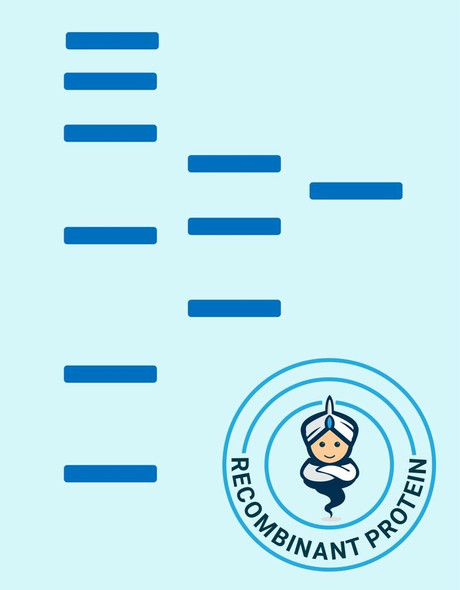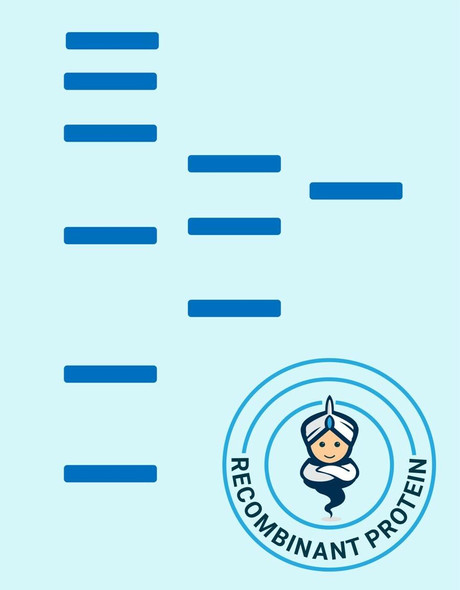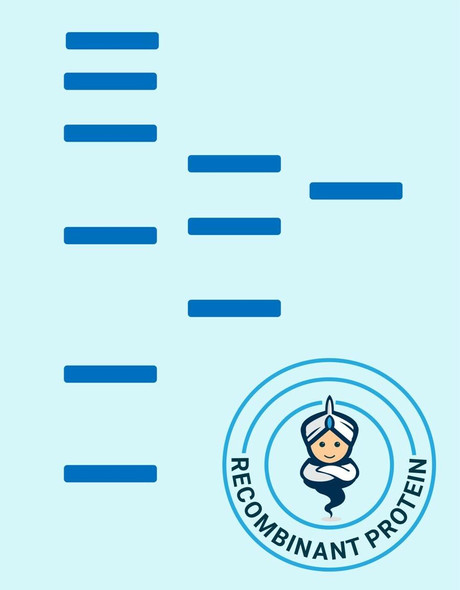Human SOX2 ELISA Kit (HUFI00674)
- SKU:
- HUFI00674
- Product Type:
- ELISA Kit
- Size:
- 96 Assays
- Uniprot:
- P48431
- Sensitivity:
- 0.094ng/ml
- Range:
- 0.156-10ng/ml
- ELISA Type:
- Sandwich
- Synonyms:
- SOX2, Sex Determining Region Y Box Protein 2, ANOP3, MCOPS3, SRY, sex determining region Y-box 2, SRY-related HMG-box gene 2, transcription factor SOX2, transcription factor SOX-2
- Reactivity:
- Human
- Research Area:
- Epigenetics and Nuclear Signaling
Description
Human SOX2 ELISA Kit
The Human SOX2 ELISA Kit is specifically developed for the precise measurement of SOX2 levels in human samples including serum, plasma, and cell culture supernatants. With its high sensitivity and specificity, this kit guarantees dependable and consistent results, making it perfect for various research purposes.SOX2 is a key transcription factor that plays a vital role in maintaining stem cell pluripotency and regulating cell differentiation. It is involved in various developmental processes and is implicated in diseases such as cancer and neurodevelopmental disorders.
Therefore, monitoring SOX2 levels can provide valuable insights for researchers studying these conditions and exploring potential therapeutic interventions.Overall, the Human SOX2 ELISA Kit offers a reliable and efficient solution for detecting SOX2 levels, contributing to the advancement of research in stem cell biology, developmental biology, and disease mechanisms.
| Product Name: | Human SOX2 ELISA Kit |
| Product Code: | HUFI00674 |
| Size: | 96 Assays |
| Alias: | SOX2, Sex Determining Region Y Box Protein 2, ANOP3, MCOPS3, SRY, sex determining region Y-box 2, SRY-related HMG-box gene 2, transcription factor SOX2, transcription factor SOX-2 |
| Detection method: | Sandwich ELISA, Double Antibody |
| Application: | This immunoassay kit allows for the in vitro quantitative determination of Human SOX2 concentrations in serum plasma and other biological fluids. |
| Sensitivity: | 0.094ng/ml |
| Range: | 0.156-10ng/ml |
| Storage: | 4°C for 6 months |
| Note: | For Research Use Only |
| Recovery: | Matrices listed below were spiked with certain level of Human SOX2 and the recovery rates were calculated by comparing the measured value to the expected amount of Human SOX2 in samples. | ||||||||||||||||
| |||||||||||||||||
| Linearity: | The linearity of the kit was assayed by testing samples spiked with appropriate concentration of Human SOX2 and their serial dilutions. The results were demonstrated by the percentage of calculated concentration to the expected. | ||||||||||||||||
| |||||||||||||||||
| CV(%): | Intra-Assay: CV<8% Inter-Assay: CV<10% |
| Component | Quantity | Storage |
| ELISA Microplate (Dismountable) | 8×12 strips | 4°C for 6 months |
| Lyophilized Standard | 2 | 4°C/-20°C |
| Sample/Standard Dilution Buffer | 20ml | 4°C |
| Biotin-labeled Antibody(Concentrated) | 120ul | 4°C (Protect from light) |
| Antibody Dilution Buffer | 10ml | 4°C |
| HRP-Streptavidin Conjugate(SABC) | 120ul | 4°C (Protect from light) |
| SABC Dilution Buffer | 10ml | 4°C |
| TMB Substrate | 10ml | 4°C (Protect from light) |
| Stop Solution | 10ml | 4°C |
| Wash Buffer(25X) | 30ml | 4°C |
| Plate Sealer | 5 | - |
Other materials and equipment required:
- Microplate reader with 450 nm wavelength filter
- Multichannel Pipette, Pipette, microcentrifuge tubes and disposable pipette tips
- Incubator
- Deionized or distilled water
- Absorbent paper
- Buffer resevoir
| Uniprot | P48431 |
| UniProt Protein Function: | SOX2: Transcription factor that forms a trimeric complex with OCT4 on DNA and controls the expression of a number of genes involved in embryonic development such as YES1, FGF4, UTF1 and ZFP206. Critical for early embryogenesis and for embryonic stem cell pluripotency. May function as a switch in neuronal development. Downstream SRRT target that mediates the promotion of neural stem cell self-renewal. Keeps neural cells undifferentiated by counteracting the activity of proneural proteins and suppresses neuronal differentiation. Interacts with ZSCAN10. Interacts with SOX3 and FGFR1. |
| UniProt Protein Details: | Protein type:Cell development/differentiation; DNA-binding; Transcription factor Chromosomal Location of Human Ortholog: 3q26.33 Cellular Component: cytoplasm; cytosol; nucleoplasm; nucleus; transcription factor complex Molecular Function:DNA binding; miRNA binding; protein binding; sequence-specific DNA binding; transcription factor activity Biological Process: cell cycle arrest; endodermal cell fate specification; eye development; forebrain development; inner ear development; negative regulation of epithelial cell proliferation; negative regulation of neuron differentiation; negative regulation of transcription from RNA polymerase II promoter; osteoblast differentiation; pituitary gland development; positive regulation of MAPKKK cascade; positive regulation of transcription from RNA polymerase II promoter; positive regulation of transcription, DNA-dependent; regulation of caspase activity; regulation of gene expression; regulation of transcription, DNA-dependent; response to wounding; somatic stem cell maintenance Disease: Microphthalmia, Syndromic 3; Tracheoesophageal Fistula With Or Without Esophageal Atresia |
| NCBI Summary: | This intronless gene encodes a member of the SRY-related HMG-box (SOX) family of transcription factors involved in the regulation of embryonic development and in the determination of cell fate. The product of this gene is required for stem-cell maintenance in the central nervous system, and also regulates gene expression in the stomach. Mutations in this gene have been associated with optic nerve hypoplasia and with syndromic microphthalmia, a severe form of structural eye malformation. This gene lies within an intron of another gene called SOX2 overlapping transcript (SOX2OT). [provided by RefSeq, Jul 2008] |
| UniProt Code: | P48431 |
| NCBI GenInfo Identifier: | 1351091 |
| NCBI Gene ID: | 6657 |
| NCBI Accession: | P48431.1 |
| UniProt Secondary Accession: | P48431,Q14537, |
| UniProt Related Accession: | P48431 |
| Molecular Weight: | 34kDa |
| NCBI Full Name: | Transcription factor SOX-2 |
| NCBI Synonym Full Names: | SRY-box 2 |
| NCBI Official Symbol: | SOX2Â Â |
| NCBI Official Synonym Symbols: | ANOP3; MCOPS3Â Â |
| NCBI Protein Information: | transcription factor SOX-2 |
| UniProt Protein Name: | Transcription factor SOX-2 |
| UniProt Gene Name: | SOX2Â Â |
*Note: Protocols are specific to each batch/lot. For the correct instructions please follow the protocol included in your kit.
Before adding to wells, equilibrate the SABC working solution and TMB substrate for at least 30 min at 37°C. When diluting samples and reagents, they must be mixed completely and evenly. It is recommended to plot a standard curve for each test.
| Step | Protocol |
| 1. | Set standard, test sample and control (zero) wells on the pre-coated plate respectively, and then, record their positions. It is recommended to measure each standard and sample in duplicate. Wash plate 2 times before adding standard, sample and control (zero) wells! |
| 2. | Aliquot 0.1ml standard solutions into the standard wells. |
| 3. | Add 0.1 ml of Sample / Standard dilution buffer into the control (zero) well. |
| 4. | Add 0.1 ml of properly diluted sample ( Human serum, plasma, tissue homogenates and other biological fluids.) into test sample wells. |
| 5. | Seal the plate with a cover and incubate at 37 °C for 90 min. |
| 6. | Remove the cover and discard the plate content, clap the plate on the absorbent filter papers or other absorbent material. Do NOT let the wells completely dry at any time. Wash plate X2. |
| 7. | Add 0.1 ml of Biotin- detection antibody working solution into the above wells (standard, test sample & zero wells). Add the solution at the bottom of each well without touching the side wall. |
| 8. | Seal the plate with a cover and incubate at 37°C for 60 min. |
| 9. | Remove the cover, and wash plate 3 times with Wash buffer. Let wash buffer rest in wells for 1 min between each wash. |
| 10. | Add 0.1 ml of SABC working solution into each well, cover the plate and incubate at 37°C for 30 min. |
| 11. | Remove the cover and wash plate 5 times with Wash buffer, and each time let the wash buffer stay in the wells for 1-2 min. |
| 12. | Add 90 µl of TMB substrate into each well, cover the plate and incubate at 37°C in dark within 10-20 min. (Note: This incubation time is for reference use only, the optimal time should be determined by end user.) And the shades of blue can be seen in the first 3-4 wells (with most concentrated standard solutions), the other wells show no obvious color. |
| 13. | Add 50 µl of Stop solution into each well and mix thoroughly. The color changes into yellow immediately. |
| 14. | Read the O.D. absorbance at 450 nm in a microplate reader immediately after adding the stop solution. |
When carrying out an ELISA assay it is important to prepare your samples in order to achieve the best possible results. Below we have a list of procedures for the preparation of samples for different sample types.
| Sample Type | Protocol |
| Serum | If using serum separator tubes, allow samples to clot for 30 minutes at room temperature. Centrifuge for 10 minutes at 1,000x g. Collect the serum fraction and assay promptly or aliquot and store the samples at -80°C. Avoid multiple freeze-thaw cycles. If serum separator tubes are not being used, allow samples to clot overnight at 2-8°C. Centrifuge for 10 minutes at 1,000x g. Remove serum and assay promptly or aliquot and store the samples at -80°C. Avoid multiple freeze-thaw cycles. |
| Plasma | Collect plasma using EDTA or heparin as an anticoagulant. Centrifuge samples at 4°C for 15 mins at 1000 × g within 30 mins of collection. Collect the plasma fraction and assay promptly or aliquot and store the samples at -80°C. Avoid multiple freeze-thaw cycles. Note: Over haemolysed samples are not suitable for use with this kit. |
| Urine & Cerebrospinal Fluid | Collect the urine (mid-stream) in a sterile container, centrifuge for 20 mins at 2000-3000 rpm. Remove supernatant and assay immediately. If any precipitation is detected, repeat the centrifugation step. A similar protocol can be used for cerebrospinal fluid. |
| Cell culture supernatant | Collect the cell culture media by pipette, followed by centrifugation at 4°C for 20 mins at 1500 rpm. Collect the clear supernatant and assay immediately. |
| Cell lysates | Solubilize cells in lysis buffer and allow to sit on ice for 30 minutes. Centrifuge tubes at 14,000 x g for 5 minutes to remove insoluble material. Aliquot the supernatant into a new tube and discard the remaining whole cell extract. Quantify total protein concentration using a total protein assay. Assay immediately or aliquot and store at ≤ -20 °C. |
| Tissue homogenates | The preparation of tissue homogenates will vary depending upon tissue type. Rinse tissue with 1X PBS to remove excess blood & homogenize in 20ml of 1X PBS (including protease inhibitors) and store overnight at ≤ -20°C. Two freeze-thaw cycles are required to break the cell membranes. To further disrupt the cell membranes you can sonicate the samples. Centrifuge homogenates for 5 mins at 5000xg. Remove the supernatant and assay immediately or aliquot and store at -20°C or -80°C. |
| Tissue lysates | Rinse tissue with PBS, cut into 1-2 mm pieces, and homogenize with a tissue homogenizer in PBS. Add an equal volume of RIPA buffer containing protease inhibitors and lyse tissues at room temperature for 30 minutes with gentle agitation. Centrifuge to remove debris. Quantify total protein concentration using a total protein assay. Assay immediately or aliquot and store at ≤ -20 °C. |
| Breast Milk | Collect milk samples and centrifuge at 10,000 x g for 60 min at 4°C. Aliquot the supernatant and assay. For long term use, store samples at -80°C. Minimize freeze/thaw cycles. |





